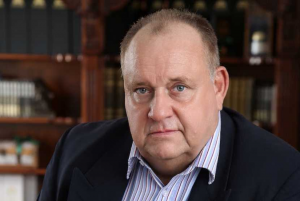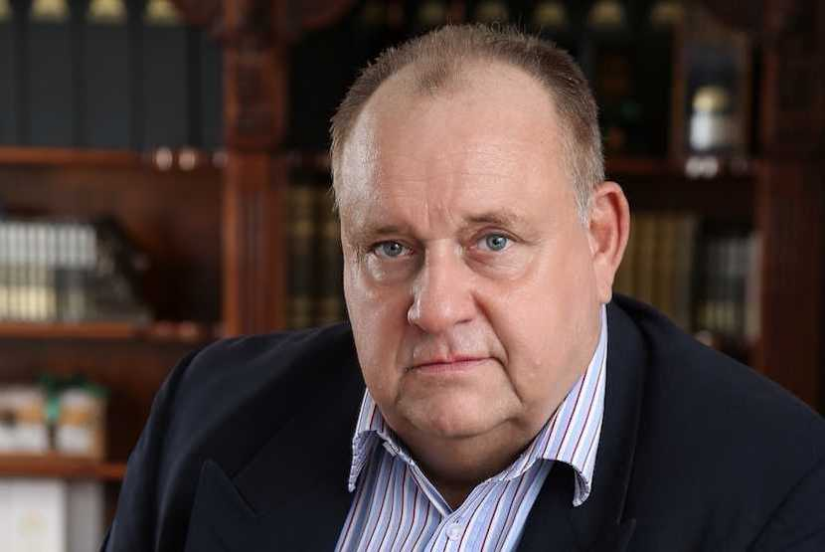For many years, Allan Gray has sucked in billions of rands in investments on the back of a reputation for superior asset management performance. Helping Allan Gray has been that investors do not necessarily have to pay an advisor to access its portfolios, which means there is more cream left for the individuals who have entrusted the company with their hard-earned savings. But Magnus Heystek, a personal finance expert and former journalist who runs his own investment firm, underscores that the smoke-and-mirrors created by marketing agencies to develop a brand around the top asset managers hides an important point: the best fund managers are perhaps elsewhere. He reveals that a little-known fund manager, with a quirky and not particularly memorable name, has attracted an ever-bigger slice of his clients’ funds on the back of superior returns. He asks whether MiPlan is South Africa’s best fund manager. – Jackie Cameron
By Magnus Heystek*
ONE hot summer’s afternoon, more than 6 years ago, I was invited to an investment presentation from an investment company I had not heard of before. It was a smallish outfit based in Cape Town, run by someone who’s path had – in another life – briefly crossed with mine. That – and his persistence in urging in getting me to this lunch – was perhaps the only reason why I decided to get into my car and drive to a very pleasant fish restaurant somewhere in Rivonia, Sandton.
Before I continue with this tale, let me tell readers how the investment industry works. The investment industry is basically split up into two distinct and separate parts: you have the asset managers (and their respective investment platforms called LISPS) on the one hand and the advisors on the other.
The advisors, on their part, are again split up between tied agents (who work for one of the large asset managers/life assurance companies and have to sell only their products,) and the independent investment advisors who by and large value their independence and profess to do their own research into what funds are recommended to their clients.
This grouping refers to themselves as IFAs (independent financial advisors) and generally tend to attract the more well-heeled clients who do not like the restrictions imposed on tied agents.
Only tied agents/IFAs who have passed their regulatory FAIS-exams (Financial Intermediary and Investment Services) can offer advice in terms of whatever licence they operate.
Asset management companies and/or linked investment platforms, are not, in terms of the law, allowed to offer financial advice. This surprises many retail investors when they try and approach these large companies directly for some “quick” advice. Not allowed. Verboten.
You either make your own investment decisions or you employ an advisor to do it for you. There is no middle ground.
Massive marketing budgets
As a consequence the large asset managers spend an enormous amount of money on advertising, branding, PR and whatever channel they can find to get their name out there, in order to (a) pacify potential and existing clients that they are reputable and (b) make it easier for the tied agents and advisors to convince reluctant clients to investment in that particular company.
One prime example is Allan Gray, which after only managing institutional money for about 25 years ventured into the retail sector. Within a very short number of years since its retail launch in 1998 it became SA’s largest asset management company. At first its flow of money was justified by its outperformance in the decade from roughly the year 2000 to 2010, but since then flows have more been a feature of powerful branding than investment performance. In fact, over the last 5 years Allan Gray’s fund-performance has been very pedestrian, but that has not dented the lure and attraction of the brand.
Its Orbis Global Equity Fund is a prime example of the power of the brand: this fund has not matched or beaten its own benchmark for over a decade, and yet the money pours into this fund in the billions every year.
These large asset managers are also very good at hiding poor- or shocking performance. Over a career in the investment world now approaching 40 years – and by default attending literally hundreds of investment seminars – and nowadays webcasts/webinars) have I never heard a fund manager tell an audience NOT to invest in his/her fund.
Added to that, I cannot remember ever hearing a fund manager of a 3rd or 4th quartile performing fund speak. Speakers are carefully selected, especially with a room full of investment advisors. Because it’s the legion of investment advisors-essentially each one its own a little cottage industry – that goes out into the homes and offices of millions of investors in order to offer investment advice and the recommendation to invest in a particular fund.
The chosen fund does not pay the advisor anything: the client does. The fees get deducted from the invested funds.
Asset managers will not survive in the retail space if they cannot convince those advisors to recommend those funds. And because of the billions spent on branding, the function of investment advice often comes down to tick-boxing four or five brand names… Allan Gray, Investec, Prudential, Coronation and Foord and so on.
But I am perambulating.
At the lunch I happened to find myself seated next to a fine gentleman by the name of Tony Bell, who was introduced to me as the fund manager of the MiPlan IP Global Macro Fund, amongst others, one of the range of funds on offer by the small outfit called MiPlan, run by Anton Turpin, who was part of the original set up at TMA, the company that spearheaded the LISP-industry in South Africa in the early Nineties.
The name Tony Bell rang… a bell (sic) and then it dawned on me, he was a top rated fund manager when a company called Syfrets ruled the roost in the Eighties and was a Raging Bull winner for his equity fund he ran for them.
Syfrets – once one of the most powerful and historical names in the SA asset management industry, is no more, thanks to some bad decisions by the Nedbank Group when it decided to dump the name many moons ago.
Investment style
Over this lunch I asked Bell a number of questions about his investment style and approach to investing, especially global investing, and what I got in return was some of the clearest, uncluttered thinking about global wealth creation I have ever encountered. Maybe it was because his views aligned with mine. At that stage he had just set up the MiPlan IP Global Macro Fund and was starting to take in some money.
After some weeks of due diligence, I decided to include his fund in the range of funds to be included in the suite of Brenthurst portfolios. It took some persuasion to convince potential clients that this fund was kosher.
I also started telling everyone who cared to listen, whether on radio, print or in person, that this was a fund worth following and investing in. “MI-what?”, was the usual response I got. You see, MI Plan is a pure boutique and does not spend massive amounts of money on marketing and advertising. It still does not. Even after it won its fifth Raging Bull-award for the Global Macro fund and been voted the best fund management company in SA for the second time running in terms of the Plexus methodology. This is the Oscars for the investment industry.
And for an investment advisory company, picking one single fund that turns out to be the outstanding performer over a five-year period, is like having two holes in one in one round, as happened to Vivienne Player, wife of Gary, at the Wanderers golf course many years ago.
MiPlan is now the single largest fund in the total assets of the Brenthurst Wealth, with an average annual return of 15,69% per annum over the past 5 years, streets ahead of any other fund in SA and almost double the return of the bigger and better known brand name offshore asset swaps funds.
Investors in this (and other offshore funds) have seen their real wealth increase substantially over the past five years.
Financial outcomes are real
I compared the financial outcome of an investment of R1m 5 years ago into each of the MiPlan IPGlobal Macro fund with that of the PSG Equity Fund, a local equity fund. I could have chosen virtually any SA-based equity fund, but I chose PSG Equity because it is the only fund in the top ten largest funds in SA that does not feature Naspers/Prosus in its equity holdings. All the other nine funds have Naspers either as the largest or the second largest holding.
So, in effect it was the perfect fund to use to illustrate the influence (or not) of Naspers in the SA stock market universe. The performance of the JSE has for years been boosted by the heavy weighting of Naspers in the total market capitalisation of the JSE, somewhere in the vicinity of 24% of total market cap.
Strip out Naspers and the performance of the JSE has been even more dismal to local investors. It has destroyed wealth over the past 5 years.
Now let us come back to the imaginary investment of R1m into either the MiPlan IP Global Macro fund or the PSG Equity fund, a stock-standard fund on offer by the legion of PSG advisors across the country. The Global Macro fund today has a value of R2,149,510, net of fees. The PSG fund is now worth R764,510 – a difference of an astonishing R1,385,000 in only 5 years. The investor in the Global Macro fund can today buy a house and a new car and still have the same amount invested that is in the PSG fund. That simple example illustrates how much wealth has been created by investing offshore or put in another way: how much wealth has been destroyed by the local equity market.
This example is being played out in a myriad of permutations across the country by investors of all ages.
Investors –either by choice or convinced by short-sighted advisors – are rushing towards retirement woefully underfunded due to the weak performance of the JSE over the past 5-7 years. Even the multi-asset categories of Reg 28 funds – where the bulk of retirement money lies – has not beaten inflation after fees and costs over 7 years and had not even produced a positive return over 1,3 and 5 years.
If this is not a prelude to a retirement train smash for most South Africans, I don’t know what is. Very few media outlets write about it even though I continue to send facts and graphs to a wide variety of editors across the country, trying to get some attention to this slow-moving train wreck.
So, my advice remains: get into offshore assets if you are looking for any chance to grow your capital.







